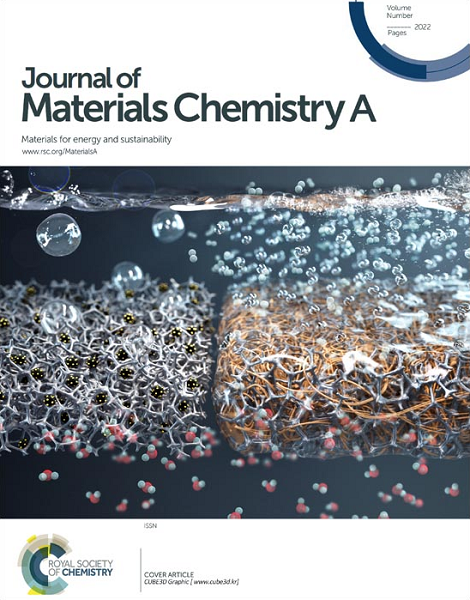用于坚固安全锂离子电池的多孔芳纶纳米纤维分离器的梯度结构设计
IF 9.5
2区 材料科学
Q1 CHEMISTRY, PHYSICAL
引用次数: 0
摘要
对于锂离子电池(lib)的应用来说,隔膜故障仍然是一个关键的安全挑战。传统的聚烯烃分离器缺乏热稳定性,限制了高温作业,而且不均匀、不受控制的孔隙容易诱导锂枝晶生长,从而影响安全性和性能。在此,我们开发了一种质子供体调节的组装策略,将梯度纳米孔结构结合到芳纶纳米纤维(GANFM)中,它可以作为lib的热稳定和电化学优越的分离器。采用反方向梯度分离器和聚乙烯(PP)分离器进行对比实验和模拟,揭示了GANFM设计的机理。阴极附近较大的纳米孔充当离子导流器,促进锂离子的传输,而阳极附近较小的纳米孔充当离子调节剂,使离子分布平滑。因此,GANFM获得了优异的离子电导率,并显著降低了锂离子浓度波动(标准差比PP低0.39倍)。采用GANFM的对称电池和全电池均表现出优异的可逆容量和c速率性能。在室温下,高电流密度(5C)下,经过300次循环后,LiFePO4//Li电池的容量保持在85.3%。即使在55°C下,250次循环后容量保持率仍为86.7%。我们的工作加深了对孔隙结构相关电化学的理解,并为lib高安全性分离器的设计提供了有价值的见解。本文章由计算机程序翻译,如有差异,请以英文原文为准。

Gradient architecture design of porous aramid nanofiber separators for robust and safe lithium-ion batteries
Separator failure remains a critical safety challenge for the application of lithium-ion batteries (LIBs). Conventional polyolefin separators lack thermal stability that limits high-temperature operations, and the nonuniform, uncontrolled pores tend to induce lithium dendrite growth that compromises safety and performance. Herein, we develop a proton donor-regulated assembly strategy to incorporate a gradient nanopore architecture to aramid nanofibers (GANFM), which serves as a thermally stable and electrochemically superior separator for LIBs. Comparative experiments and simulations involving gradient separators in opposite orientations and a polyethylene (PP) separator reveal the mechanism of GANFM design. The larger nanopores near the cathode function as ion guides that facilitate Li-ion transport, while the smaller nanopores near the anode act as ion regulators smoothing the ion distribution. As a result, the GANFM achieves superior ionic conductivity and significantly reduces Li-ion concentration fluctuations (standard deviation is 0.39 times lower than that of PP). Both symmetric and full cells incorporating GANFM exhibit excellent reversible capacity and C-rate performance. The LiFePO4//Li cells retain 85.3% capacity after 300 cycles with a high current density (5C) at room temperature. Even at 55 °C, capacity retention remains at 86.7% after 250 cycles. Our work deepens the understanding of pore structure-related electrochemistry and provides valuable insights into the design of high-safety separators for LIBs.
求助全文
通过发布文献求助,成功后即可免费获取论文全文。
去求助
来源期刊

Journal of Materials Chemistry A
CHEMISTRY, PHYSICAL-ENERGY & FUELS
CiteScore
19.50
自引率
5.00%
发文量
1892
审稿时长
1.5 months
期刊介绍:
The Journal of Materials Chemistry A, B & C covers a wide range of high-quality studies in the field of materials chemistry, with each section focusing on specific applications of the materials studied. Journal of Materials Chemistry A emphasizes applications in energy and sustainability, including topics such as artificial photosynthesis, batteries, and fuel cells. Journal of Materials Chemistry B focuses on applications in biology and medicine, while Journal of Materials Chemistry C covers applications in optical, magnetic, and electronic devices. Example topic areas within the scope of Journal of Materials Chemistry A include catalysis, green/sustainable materials, sensors, and water treatment, among others.
 求助内容:
求助内容: 应助结果提醒方式:
应助结果提醒方式:


